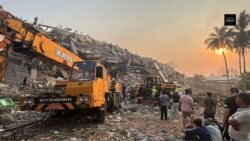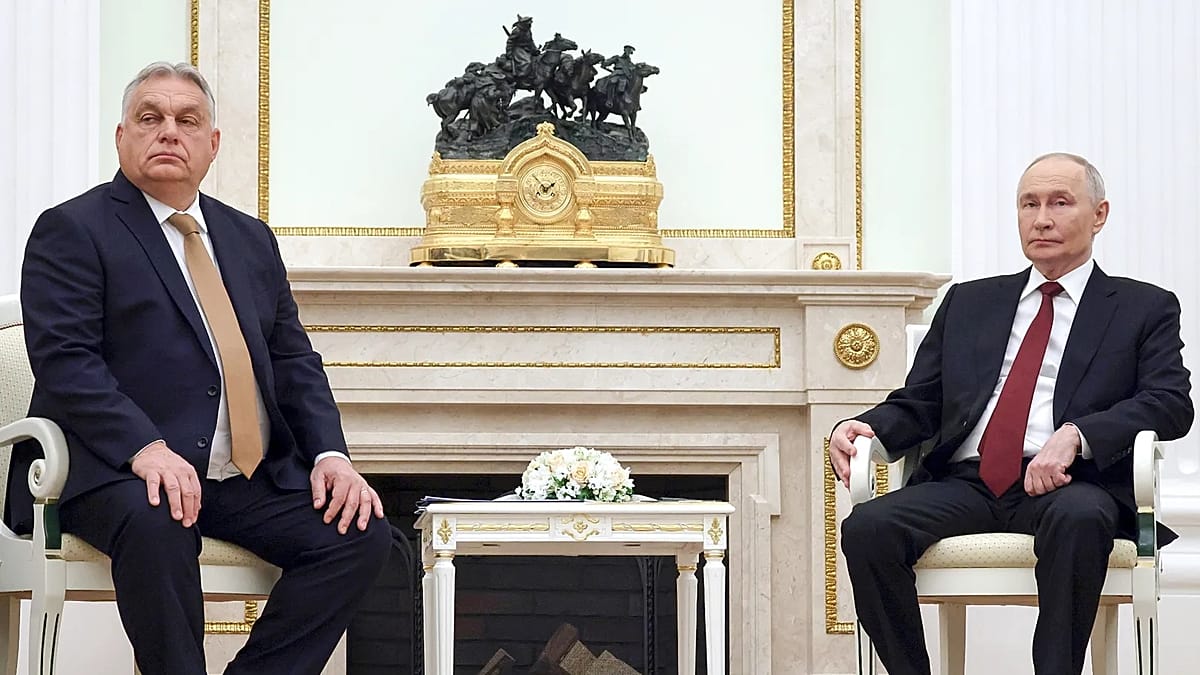Cliff Notes
Myanmar earthquake relief hampered by lack of aid
- Approximately 60,000 people are currently living in tent encampments in central Myanmar following a devastating 7.7 magnitude earthquake, with significant damage to infrastructure and homes.
- Relief efforts are obstructed by ongoing military airstrikes and violence, creating further challenges in delivering necessary aid to affected regions.
- Despite a rare request for international assistance from Myanmar’s military government, the distribution of aid has been complicated by political tensions and the civil war ongoing since the 2021 coup.
Myanmar earthquake relief hampered by lack of aid
Some 60,000 people are living in tent encampments in central Myanmar following last month’s 7.7 magnitude earthquake — the country’s strongest since 1912.
Myanmar suffered heavy damage in the March 28 quake, in which apartment blocks and hotels collapsed, and roads and bridges were destroyed.
Natty Tangmeesang, a blogger from neighboring Thailand who visited the affected areas of Myanmar, including the city of Sagaing, said many people who have been left homeless by the quake lack the necessary funding to rebuild their homes.
“The areas that I went to were homes to many monasteries, schools for nunneries, and remote villages,” Natty told WTX. “They are still in need of everything from food, drinking water, daily necessities, and funds. Many families have to stay on the small streets and beg for donations from passersby.”
Myanmar’s military government, which calls itself the State Administration Council (SAC), said 3,145 people have been killed, more than 4,500 injured and more than 200 remain missing.
The Democratic Voice of Burma (DVB), a media outlet, reported 4,346 people killed with 7,890 people injured and 210 missing.
Relief efforts have been complicated by Myanmar’s brutal civil war, which has been raging since Myanmar’s military seized power in a 2021 coup that deposed the democratically elected civilian government led by Aung San Suu Kyi.
The military has been battling with resistance groups, including the opposition National Unity Government (NUG), and ethnic armed organizations. The NUG was created by elected Myanmar lawmakers removed from their posts by the junta.
Although the SAC controls less than half of the country’s territory, any international aid has had to go through the regime, which is still in command of major cities like Mandalay, Yangon and the capital, Naypyidaw.
What is hampering relief efforts?
Aid workers say they have been struggling to provide relief amid the devastation. The UN Human Rights Office said in a statement that Myanmar’s military has continued airstrikes — despite a declared ceasefire — at a time when the sole focus should be on ensuring aid reaches disaster zones.
The International Federation of Red Cross and Red Crescent Societies said heavy rain on Tuesday evening flooded streets and camps around Myanmar’s second-largest city, Mandalay.
The Progressive Voice Myanmar, an advocacy organization working on the ground to assist those affected, said international aid has not reached areas of Sagaing beyond the city.
“But our locally-led aid delivery missions and first phase of recovery efforts have reached some impacted communities beyond Mandalay and Sagaing cities,” the organization’s founder, Khin Ohmar, told DW. “These locally led efforts are both from civil society as well as by the NUG, including health care.”
Khin said, “The junta is blocking and obstructing aid and threatening aid workers and extorting money.”
Which countries are helping earthquake-hit Myanmar? – Context News
Myanmar quake toll passes 1,600 as people dig for survivors with bare hands – BBC
Myanmar earthquake relief hampered by lack of aid, airstrikes – Lumi News Malaysia





